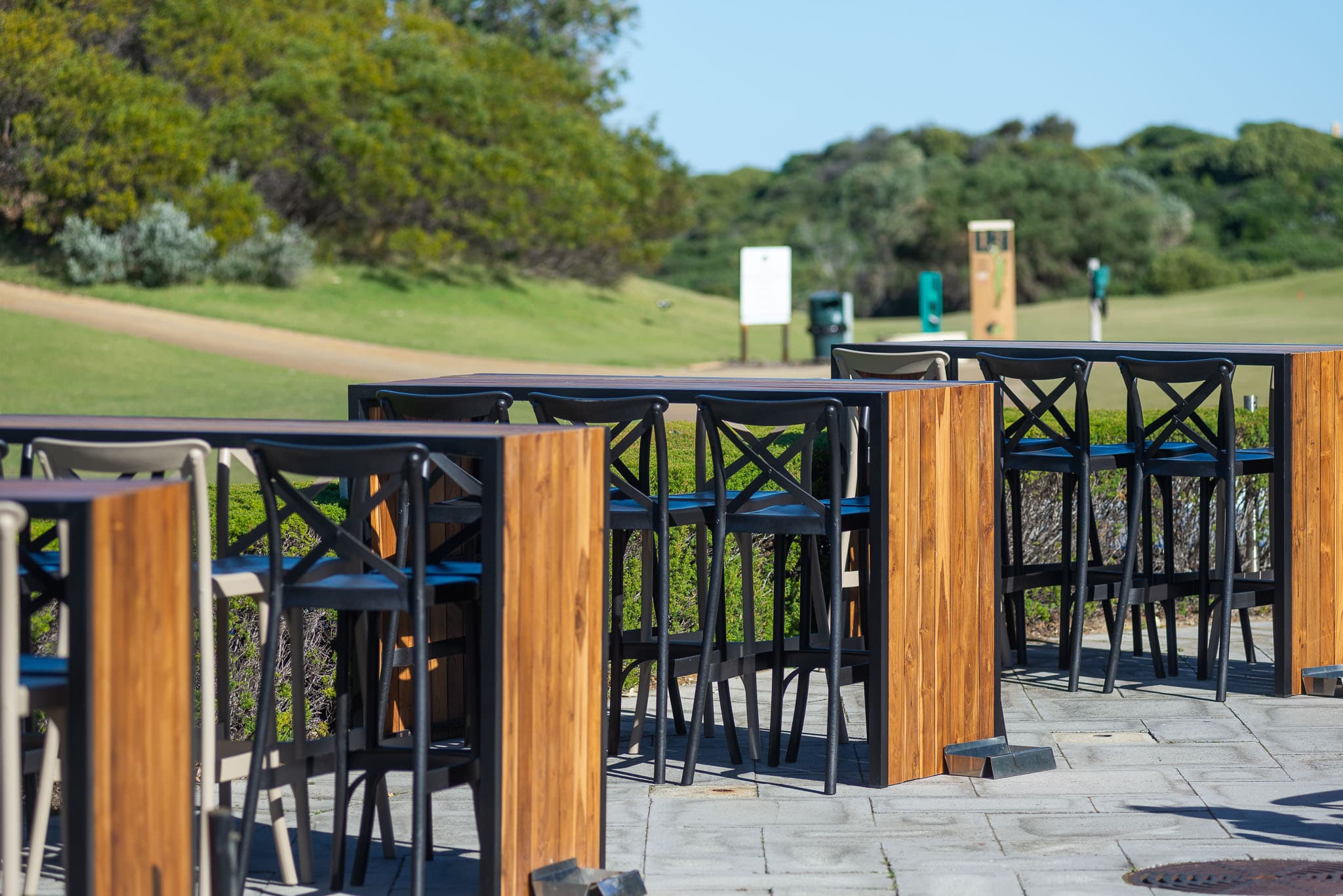Hello there, Bar owner! You’ve come to the right place! Whether you’re looking to update your current furniture, or fit-out your new venue, Adāge Furniture will be able to help you with all your furniture needs.
We understand updating your bar tables may seem a little daunting at first, but we’re here to help you as best we can. This blog is a guide on the costs in the industry and what you can expect to cause a difference in cost of the furniture you look at.
There is great pricing difference across the industry, and there are multiple reasons for this. It could be the materials used, or the place of manufacture – or even the style. Keep on reading below to find out more about what you can expect when you’re shopping for your new bar tables.
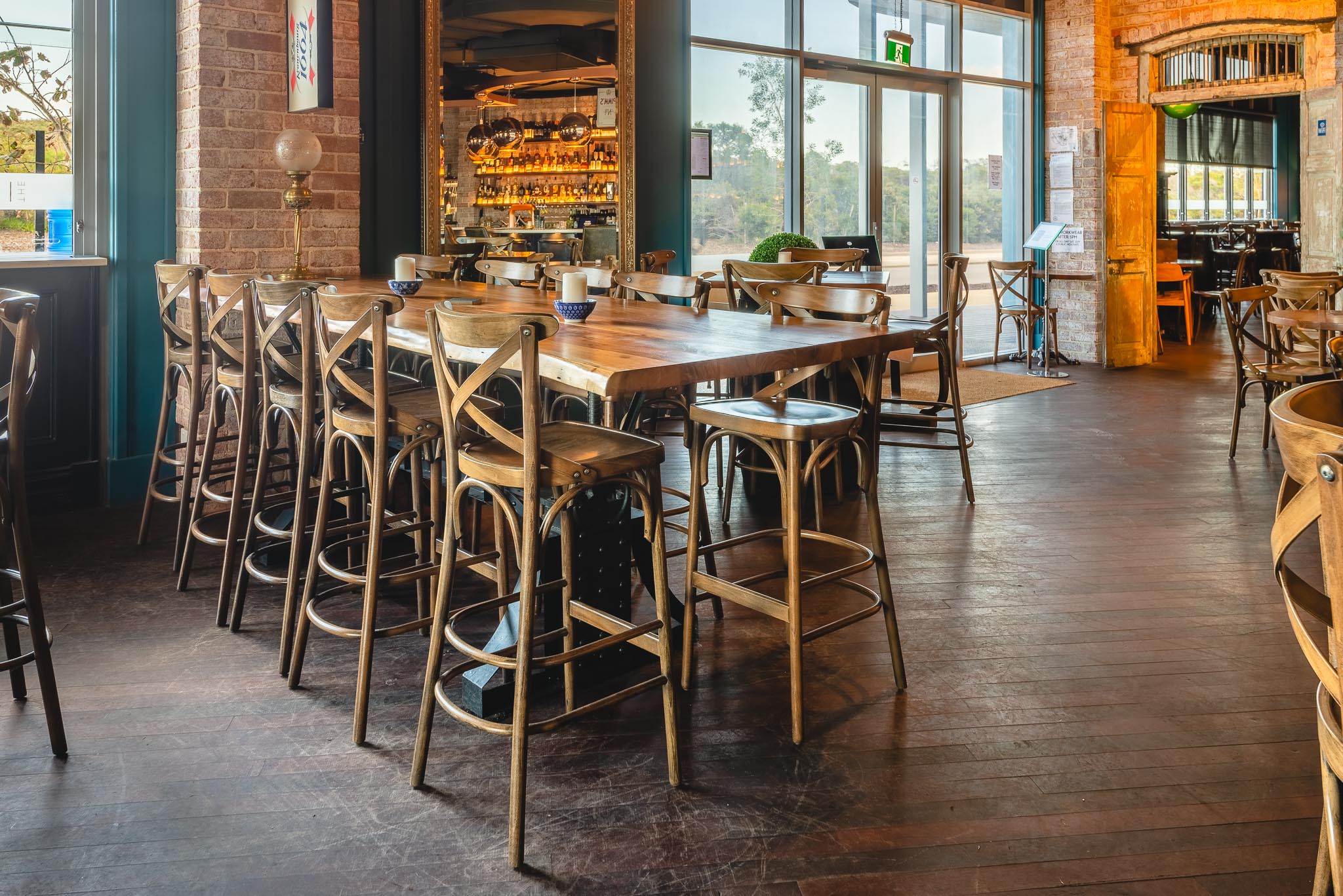
How does the material of Bar Tables affect the cost?
Whether a bar table is made from timber or from a laminate, will greatly affect the price that you pay.
Timber bar tables can be made from a variety of timbers – from Australian hardwoods, through to Asian timbers. Tables made form Australian hardwoods would be the priciest of the timber range, as they are created from limited Australian resources and the labour costs to create the table are far higher than those of Asian origin. Alternatively, imported Indonesian and Indian timbers will cost less than the locally manufactured bar tables, and still be of great quality. The Asian versions use a timber, often rubberwood, that is fast-growing, mass produced, and isn’t as strong as a hardwood or Acacia timber. Whilst Asian versions are often cheaper, they aren’t as hardy and don’t withstand the extreme weather Australia tends to experience.
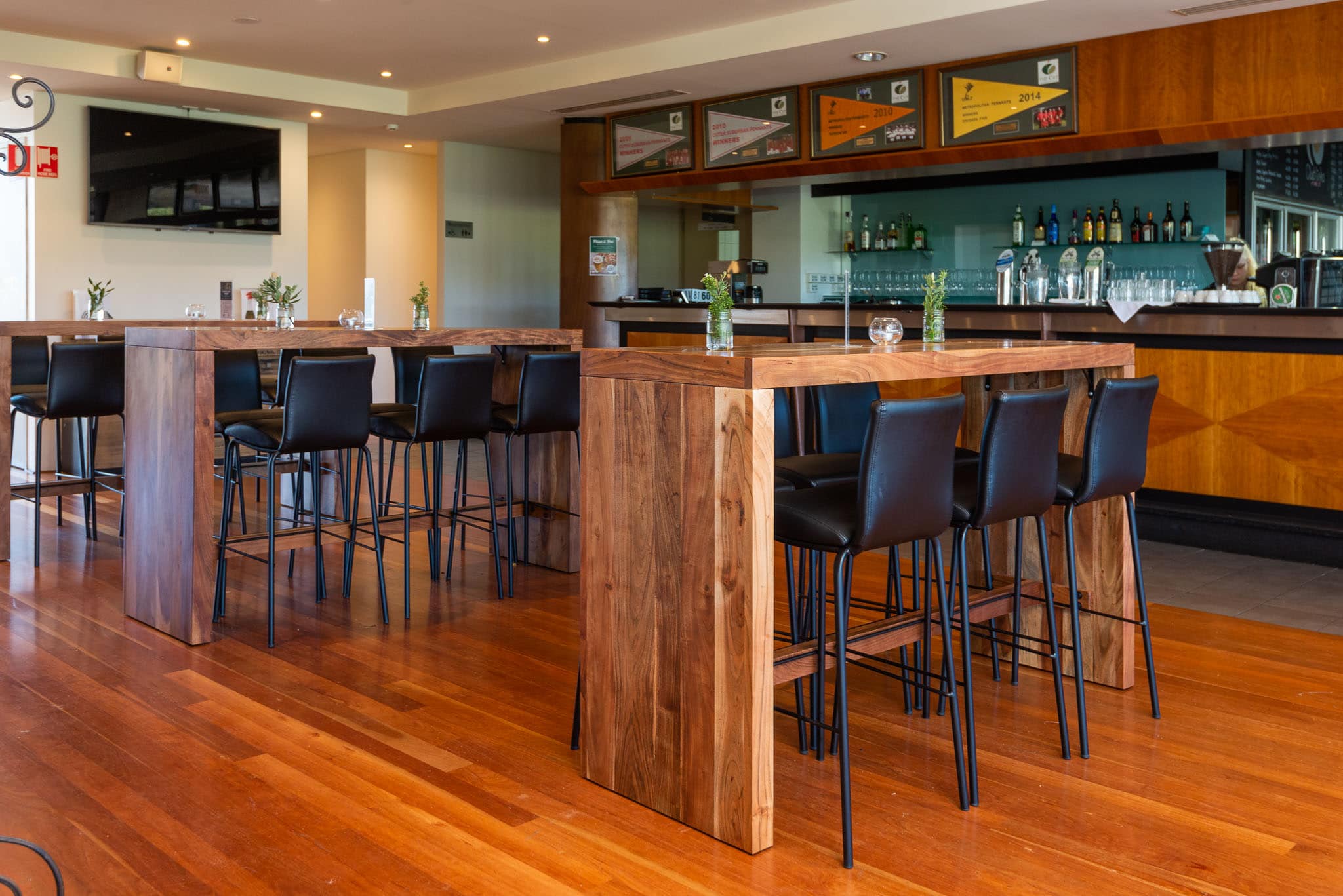
This goes for both entire timber bar tables and timber table tops. However, a more cost-effective way to achieve the timber look would be to go with a separate timber table top on a bar table base. However, the biggest downfall with this idea, is that these tables are limited in their sizing and the number of patrons that they can fit.
A different option that wouldn’t be as costly, would be to use a laminate top, rather than a timber table top. Laminate can be either compact laminate or pre-laminated. The more cost-effective version would be the pre-laminated tops, which come in a wide range of colours and offer more value for money. However, these tops can’t be used outside, whereas compact laminate can. Compact laminate table tops are incredibly hardy, thinner, and weather-proof, meaning they can ask a higher price than their pre-laminated counterparts.
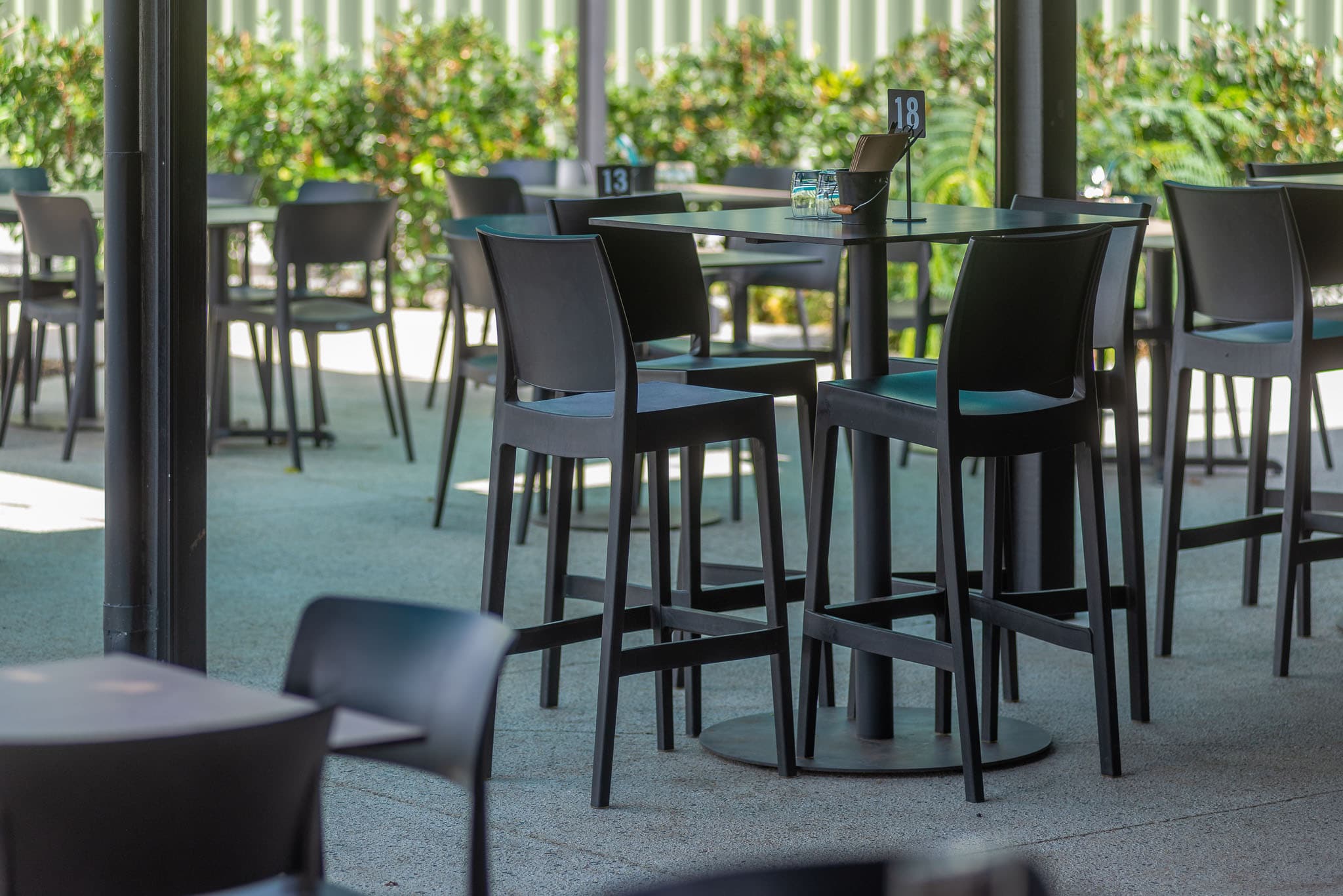 Alternative to both timber and laminate, would be resin tables tops. Here at Adāge we call these Gentas tops, but you may have heard of them as Isotops or SM France table tops. Resin table tops are strong tops that offer beautiful finishes and ask a reasonable price. They aren’t created from solid, natural materials, such as timber, and the process to create the top is much simpler than it is to create a laminate table top. This often means moulded resin table tops are the most economical table top available in the commercial furniture market.
Alternative to both timber and laminate, would be resin tables tops. Here at Adāge we call these Gentas tops, but you may have heard of them as Isotops or SM France table tops. Resin table tops are strong tops that offer beautiful finishes and ask a reasonable price. They aren’t created from solid, natural materials, such as timber, and the process to create the top is much simpler than it is to create a laminate table top. This often means moulded resin table tops are the most economical table top available in the commercial furniture market.
However, it isn’t only the material of the top of the bar table that will affect the cost of the table. The materials that are used in the base will also affect the price. Standard steel, aluminium, cast iron and stainless steel are all used to create bases.
Standard steel is in abundance and therefore tends to be the most inexpensive material used for table bases. Cast iron bases are more costly than standard steel as they require moulds for each base, and therefore more work goes into each base. Each mould is crafted for each individual style, and this takes time and resource and ultimately drives the price up. Stainless steel is the most expensive material used for table bases, due to the additives that are used to make the product corrosion resistive.
With any steel products, there are also additional options, such as powder coating or galvanizing that drive the cost of the item up. These additives make the item useable outdoors, but it does add to the cost that you will pay.
As bar tables are such big items, the size that you decide to run with can also affect the price that you will pay.
How does the size of my Bar Table affect the cost?
Bar tables come in many sizes. Some seat 2 people, some seat 4, while others can seat up to 8 patrons at the one table.
This may sound obvious, but the bigger the table, the more the table will cost. Bigger tables require more materials to create them, and therefore the cost increases. However, it isn’t only materials that mean that bigger tables are more costly.
Bar tables are bulky items to freight and therefore the bigger the table, the more it will cost to freight from the warehouse to your venue.
Any fixed footrails on the bar table will also mean that they will cost more to freight as they are harder to transport. If the footrails aren’t fixed to the table and can be bolted on after delivery, that will lessen the cost of freight.
Whether your bar table is assembled or flat packed will also affect the cost of the delivery. Flat packed bar tables will cost less than an assembled bar table to freight, however it does mean there is the added bother of assembling your bar tables at your venue when they arrive.
An option to get around this would be to choose a table top and table base, rather than a full bar table. A base and top might not give you the size you need, but it would cost less in shipping.
Whilst the size of your table affects the cost, the style that you are going for will affect the price as well
How does the style affect the price of my Bar Tables?
Bar tables vary in styles, and this doesn’t often mean a variance in price. However, there are small features that would cause a variance.
For example, if the bar table has slab ends rather than legs, it will be more costly. Slab ends look great; however, they do mean that it is difficult to seat someone on the end of the table.
Some bar tables may offer wheels on the feet of the table to enable easy manoeuvring around the venue. Wheels do add to the cost and can cause the tables to be above the height of a normal commercial bar table.
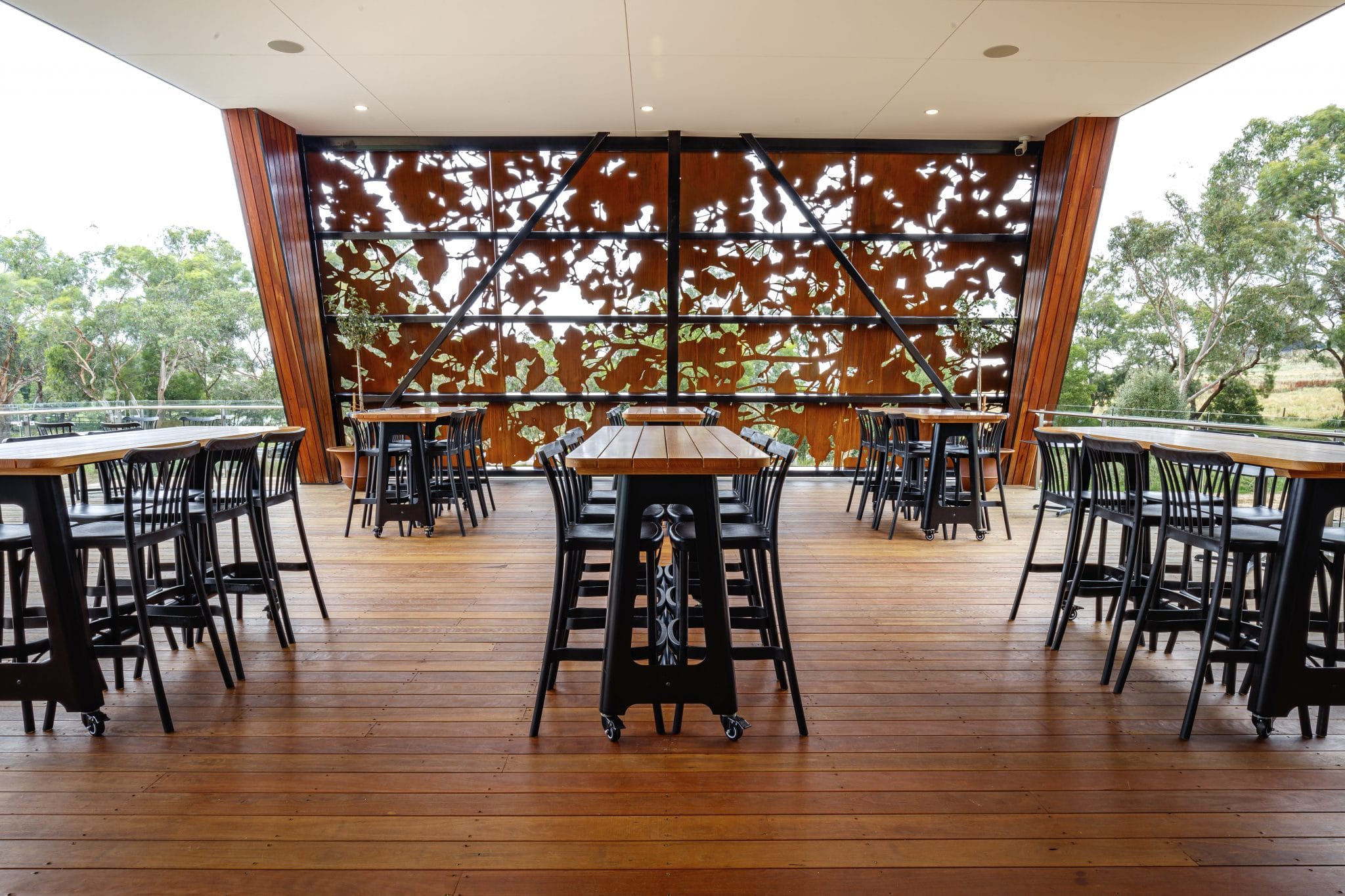
Apart from materials, size and style, the cost of bar tables is also greatly affected by the place of manufacture and the levels of quality that is maintained while the bar table is being manufactured.
Do the manufacturing origins affect the cost of Bar Tables?
As with any furniture, the origin of the furniture will affect the cost of the product. Different countries have different methods of production and often have varying standards with regards to the quality control that is kept. This all affects the price that you will pay for the products.
You may notice that often bar tables of Asian origin will come at a lower cost than those of European or Australian origin. Products from Asia are mass-produced with minimal costs and much lower standards of quality. The materials used are often inferior and cost less, and therefore can be sold at a cheaper price. However, they are also of an inferior quality.
Typically, European manufacturers maintain tight quality controls and focus on producing products of high quality, rather than in mass. These manufacturers come from a line of craftsman, and they take pride in their work. However, tight quality control must also be maintained by the importer of the table top or base to ensure that the products being imported remain of the best quality.
As with anything in life, you can expect to get what you pay for. With all Bar Tables, you can be sure that the higher quality furniture will cost you more. Furniture that is manufactured in any European country will always ask a higher price than their Asian counterparts. Similarly, locally manufactured tables will also cost more. This is mainly due to the higher quality raw materials used, and the quality control that is maintained in the factories. More costly furniture is crafted to last, while cheaper versions are created in mass quantities with little attention paid towards quality.
So, this is where we leave you to make your decision about your bar tables. All the best!
